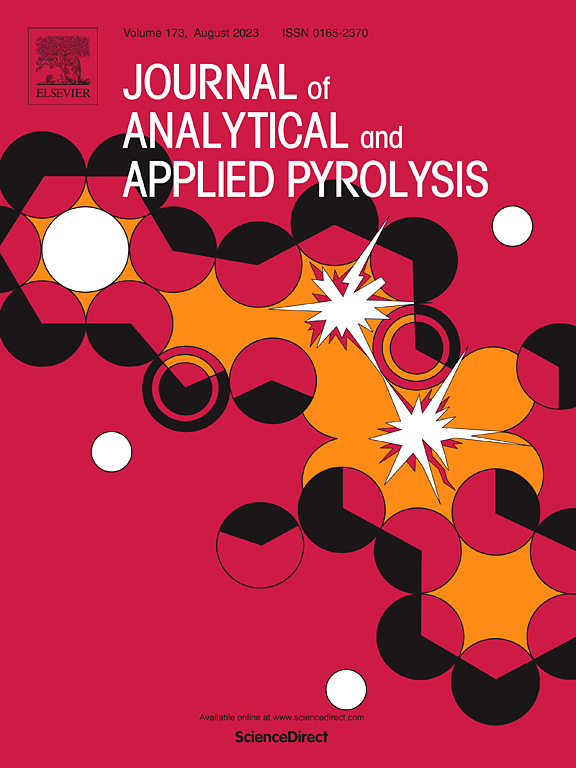含水热模拟中低阶煤中有价元素动态迁移机制——以鄂尔多斯盆地河东煤田为例
IF 6.2
2区 化学
Q1 CHEMISTRY, ANALYTICAL
引用次数: 0
摘要
煤中有价值的微量元素对研究含煤盆地的形成演化过程和地层发育特征具有重要的地质意义。运移富集机制是解决含煤金属矿物成矿问题的关键科学问题。热演化过程中有价微量元素的迁移和赋存模式极为复杂,因此了解煤层中微量元素的迁移机理尤为重要。以河东煤田低阶烟煤为研究对象,在250℃~ 550℃(间隔50℃)范围内,进行了大水量、大样本量(1.5 mL水:1 mL煤)的水热模拟实验,系统探索了不同温度下有价微量元素的迁移富集行为。结果表明:1)随着温度的升高,黏土矿物中Al含量的变化大于石英中Si含量的变化。Ca和P与有机物结合,容易迁移成气态或液态产物,Mg和Fe共存于硫酸盐矿物中。2)在250℃~ 400℃,温度是主导因素,Ga、V、Hf、Zr、Th、REY与有机质结合,随挥发物释放,迁移成气态和水产物。在450℃~ 550℃,温度和水共同影响某些矿物中微量元素的溶解和迁移。3)铝硅酸盐矿物中Li的富集和挥发速率不同于其他有机质伴生金属元素。4)基于随机森林算法的微量元素含量预测模型能够有效地估计Li、V、Sr、Th、Zr和REY的含量,但预测模型的准确性受到数据集质量的限制。含水热模拟实验揭示了有价微量元素的赋存和运移机理,为煤系矿产中关键金属资源的勘查和高效开发提供了理论依据,对提高煤炭资源的综合利用具有重要的实用价值。本文章由计算机程序翻译,如有差异,请以英文原文为准。
Dynamic migration mechanisms valuable elements in low-rank coal during hydrous thermal simulation: A case study of the Hedong coalfield, Ordos Basin, China
Valuable trace elements in coal can contribute critical geological insights into the formation and evolution processes of coal-bearing basins and the development characteristics of strata. The migration and enrichment mechanism are a key scientific issue in solving the mineralization of coal-bearing metal minerals. The migration and occurrence patterns of valuable trace elements during thermal evolution are extremely complex, so it is particularly crucial to comprehend the migration mechanism of trace elements in coal seams. Taking low-rank bituminous coal in Hedong coalfield as the research object, hydrous thermal simulation experiments with a large water volume and a large sample volume (1.5 mL water: 1 mL coal) were conducted in the range of 250℃ ∼ 550℃ (interval of 50℃) to systematically explore the migration and enrichment behavior of valuable trace elements under varying temperatures. The results show the following: 1) The content of Al in clay minerals changes more with the increase in temperature than that of Si in quartz. Ca and P, associated with organic matter, readily migrate into gaseous or liquid products, and Mg and Fe coexist in sulfate minerals. 2) At 250℃ ∼ 400℃, temperature is the dominant factor, where Ga, V, Hf, Zr, Th, and REY combined with organic matter are released with volatile matter and migrate into gaseous and water products. At 450℃ ∼ 550℃, temperature and water jointly influence the dissolution and migration of trace elements in certain minerals. 3) The enrichment and volatilization rates of Li in aluminosilicate minerals are different from those of other valuable metal elements associated with organic matter. 4) Trace element content prediction models based on the random forest algorithm effectively estimate the contents of Li, V, Sr, Th, Zr, and REY, although the accuracy of the predictive model is limited by the quality of the dataset. Hydrous thermal simulation experiments revealed the occurrence and migration mechanism of valuable trace elements, providing a theoretical basis for the exploration and efficient development of key metal resources in coal-bearing minerals, which has important practical value for improving the comprehensive utilization of coal resources.
求助全文
通过发布文献求助,成功后即可免费获取论文全文。
去求助
来源期刊
CiteScore
9.10
自引率
11.70%
发文量
340
审稿时长
44 days
期刊介绍:
The Journal of Analytical and Applied Pyrolysis (JAAP) is devoted to the publication of papers dealing with innovative applications of pyrolysis processes, the characterization of products related to pyrolysis reactions, and investigations of reaction mechanism. To be considered by JAAP, a manuscript should present significant progress in these topics. The novelty must be satisfactorily argued in the cover letter. A manuscript with a cover letter to the editor not addressing the novelty is likely to be rejected without review.

 求助内容:
求助内容: 应助结果提醒方式:
应助结果提醒方式:


